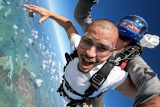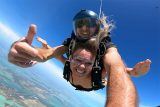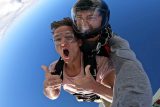Skydive Body Positions and Why They Matter
Skydiving
Posted by: Skydive Key West
2 years ago
The position of your body has a big effect on how successfully you are able to do a physical activity. Sprinters, for instance, have a signature stance before beginning to run – hands on the ground, head down, knees bent. They take off the instant they hear the starting gun, changing their body position to fit the various parts of the run.
Skydiving is no different. Depending on where you are in the skydiving process, it is important to pay attention to your body position. What is the body position during skydiving? Let’s jump into skydive positions and why they matter.
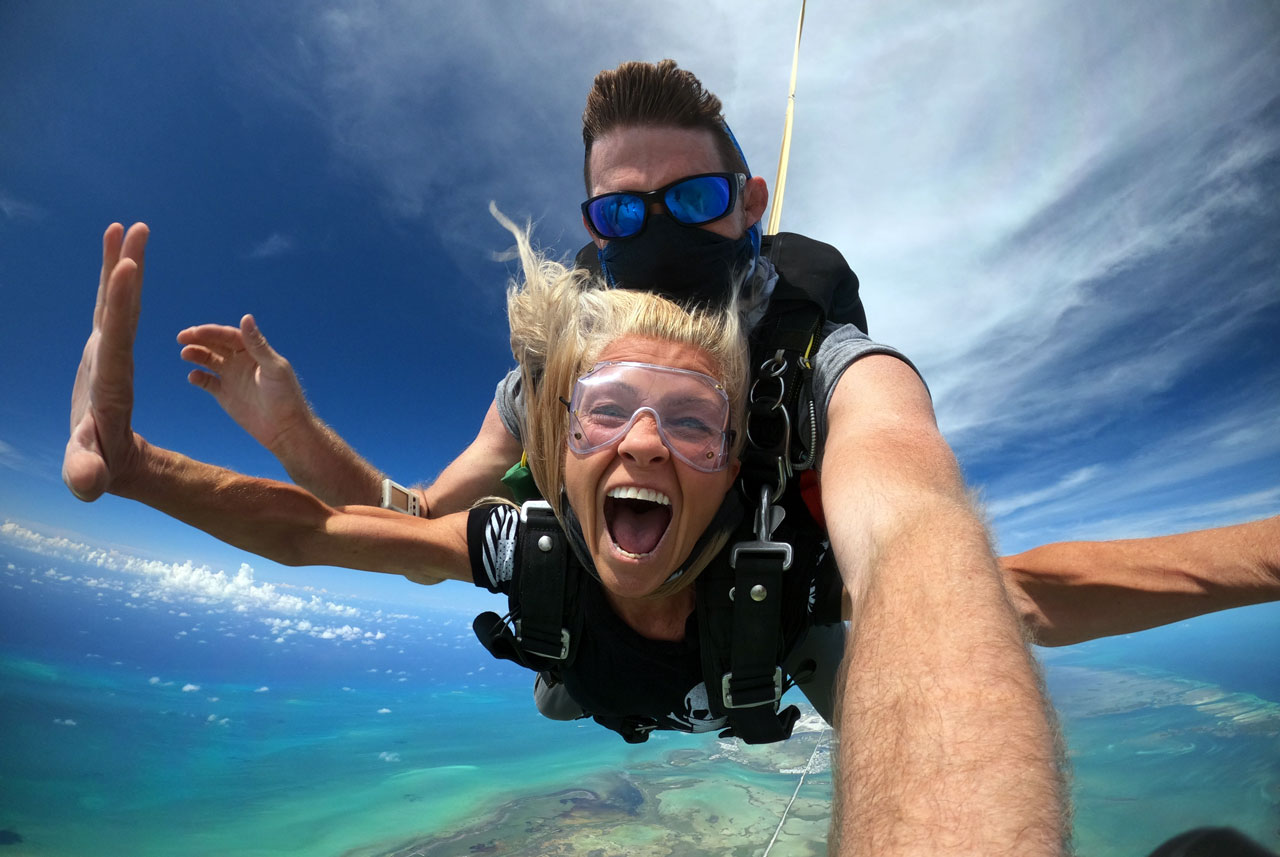
Tandem Skydiving
The Exit Body Position
On the day of your skydive after you’ve received your training, met with your instructor, and boarded the plane, you’ll ride to altitude and prepare to exit the aircraft. When you get close to jumping altitude, the instructor will attach your harness to their own and, when the time is right, begin to move toward the door. Usually, the instructor will have you grab hold of the harness to make sure your hands are stowed in a secure position.
Once in the door, the tandem instructor will get you both in the best position for exit and then: one … two … three, GO! As you leave the aircraft, you’ll thrust your belly and hips toward the earth while keeping your head back and your feet up toward the sky. This is called the skydiving arch or banana position!
Why do you arch your back when skydiving? Because it is the most stable skydiving position. Students learning to skydive solo and many licensed jumpers strike the same pose. Don’t worry – there’s no need to do an arch body exercise before the day of your jump. We’ll take care of teaching you the proper position when you get here.
It’s worth noting that you should always listen to your tandem instructor for direction. Each jump is different and may change slightly from our explanation here. Your tandem instructor is in charge of your jump, so their instruction takes precedence.
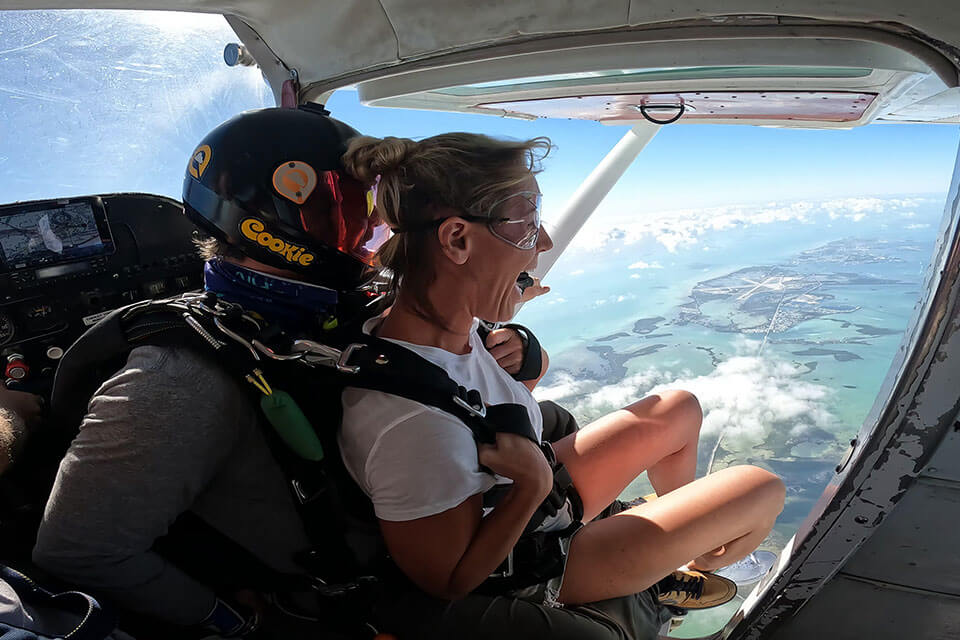
The Freefall Arch
A few seconds after you’re stable in freefall, your instructor will tap you to let you know it’s time to let go of your harness with your hands and add them into the skydiving arch position: move your arms out to the side and face your palms down to earth. The feeling of air rushing through your fingers is super invigorating! You’ll maintain the arch position throughout the freefall phase of the skydive and all the way until parachute deployment, at which point you can relax your body and let your instructor guide the way.
Another freefall pro tip: smile! This will tighten the skin on your face and prevent flappy cheeks. Though not necessarily uncomfortable, floppy cheeks do feel a little funny and can evoke quite a few laughs on the post-jump video review. You won’t have to force it, though. It’s pretty darn hard not to smile when you’ve got endorphins, serotonin, and dopamine flowing through your veins.
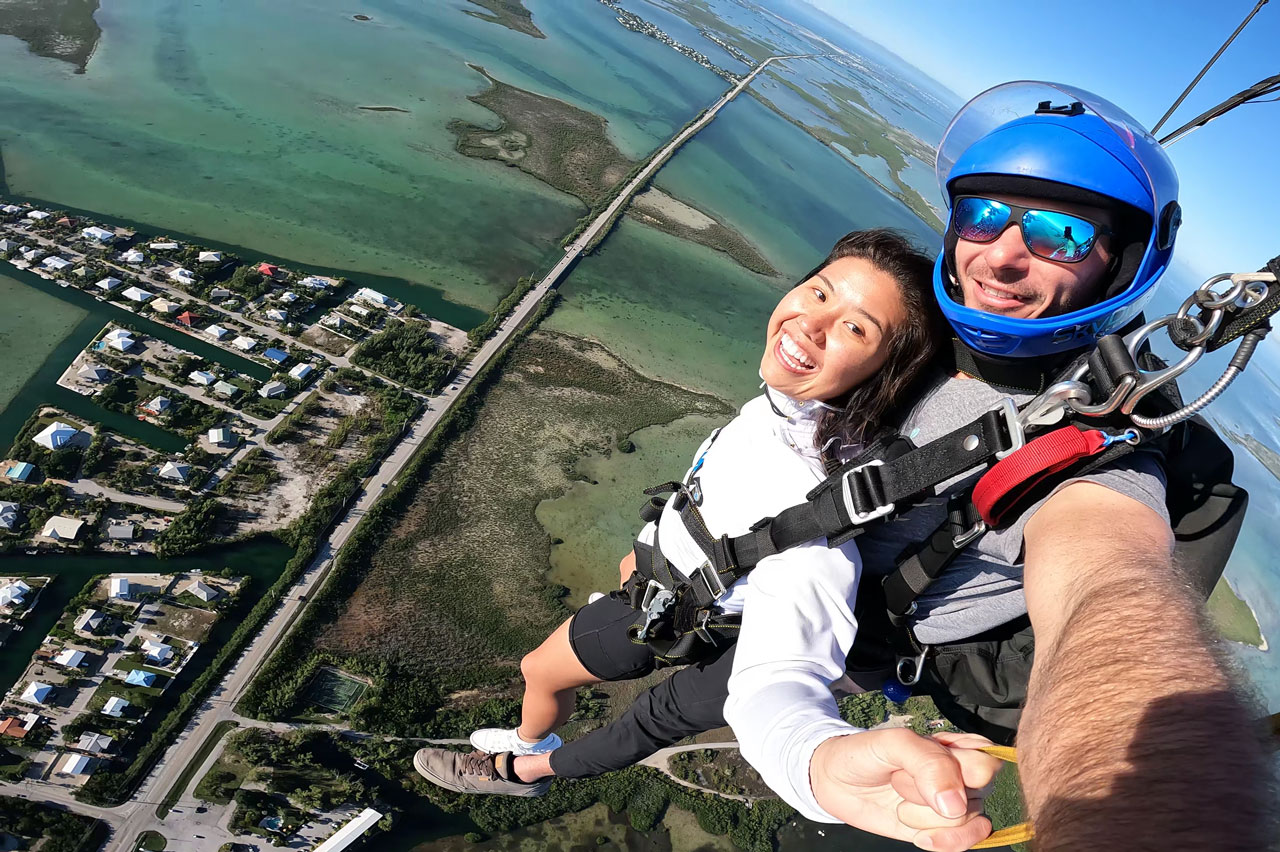
Tandem Skydiving Landing
After your thrilling freefall and breathtakingly beautiful canopy ride over the Florida Keys, it’s time to prepare for landing. This is one of the most important body positions to pay attention to on your jump as it is intended to keep you and your instructor uninjured on touchdown.
While weather and other factors can adjust the protocol for your specific jump (remember, each skydive is different), the typical tandem landing will have you slide in on your backside.
When the instructor tells you to do so, you’ll lift your legs out in front of you as high as you can with your toes toward the sky. This will allow you to slide gently onto the ground without your legs or feet getting in the way. No one likes a sprained ankle, especially on vacation!
Licensed Skydiving
Exiting the Aircraft
Unlike tandem skydiving, licensed skydivers execute a multitude of skydiving positions when it comes time to exit the airplane. If skydiving solo, the exit possibilities are almost endless! The jumper could dive, flip, cartwheel, cannon ball, or employ the regular old arch position when leaving the plane.
Licensed skydivers have the chance to explore tons of cool skydiving disciplines, too – like Relative Work (RW), Freeflying, or Wingsuiting to name a few. The exit position for each of these disciplines is different and even each individual jump within the discipline is different.
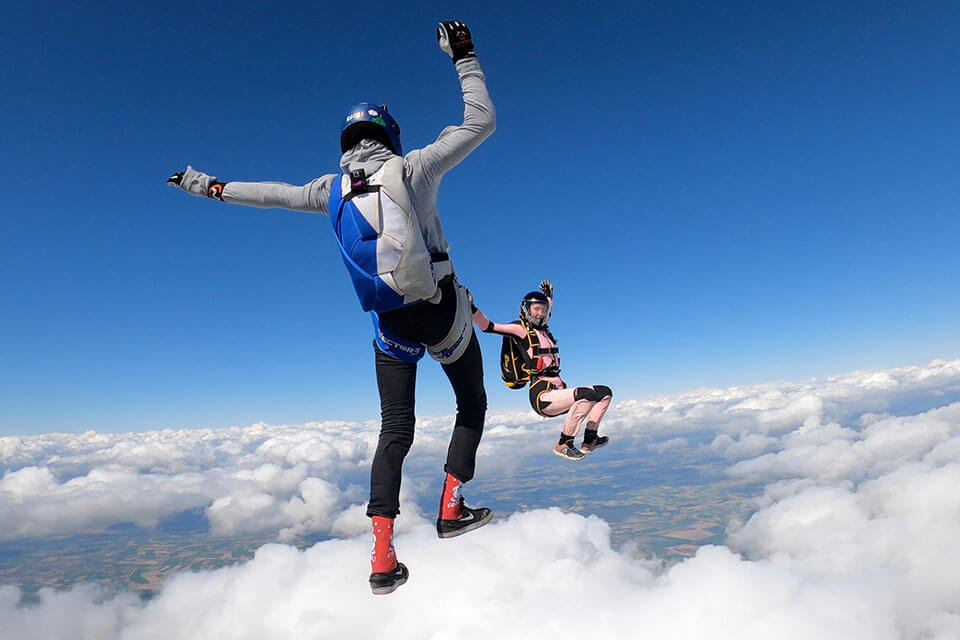
Freefallin’
Like the position on exit, the skydiving body position for licensed skydivers is pretty open ended and can depend on the type of jump they have planned. Here’s a rundown on how to position the body for different disciplines:
- Relative Work (RW): Relative Work is a fancy name for belly jumpers. These skydivers build formations in the air while keeping their body in the famous skydiving arch body position. They’ll grab onto the hands, legs, or grips of other jumpers to make different shapes or turn points. Flying on your belly results in a slower descent rate – this is where we get the average speed of 120 mph.
- Freefly: A freefly body position means the body is in a different orientation in the sky. Head down, feet down, or in the sitting position are all common poses. Flying in these orientations makes you fall much faster!
- Wingsuit: Wingsuiters wear a special suit that lets them fly forward through the air, kind of like a flying squirrel. They position their arms straight out to the side and their legs open to keep the fabric of the suit spread apart in order to increase drag. This position makes their descent slow, allowing more time to cover distance.
Are you ready to try out your skydive posture and get your knees in the breeze? Schedule a skydive today at Skydive Key West – the premiere skydiving location for South Florida and the Keys. Blue skies!

